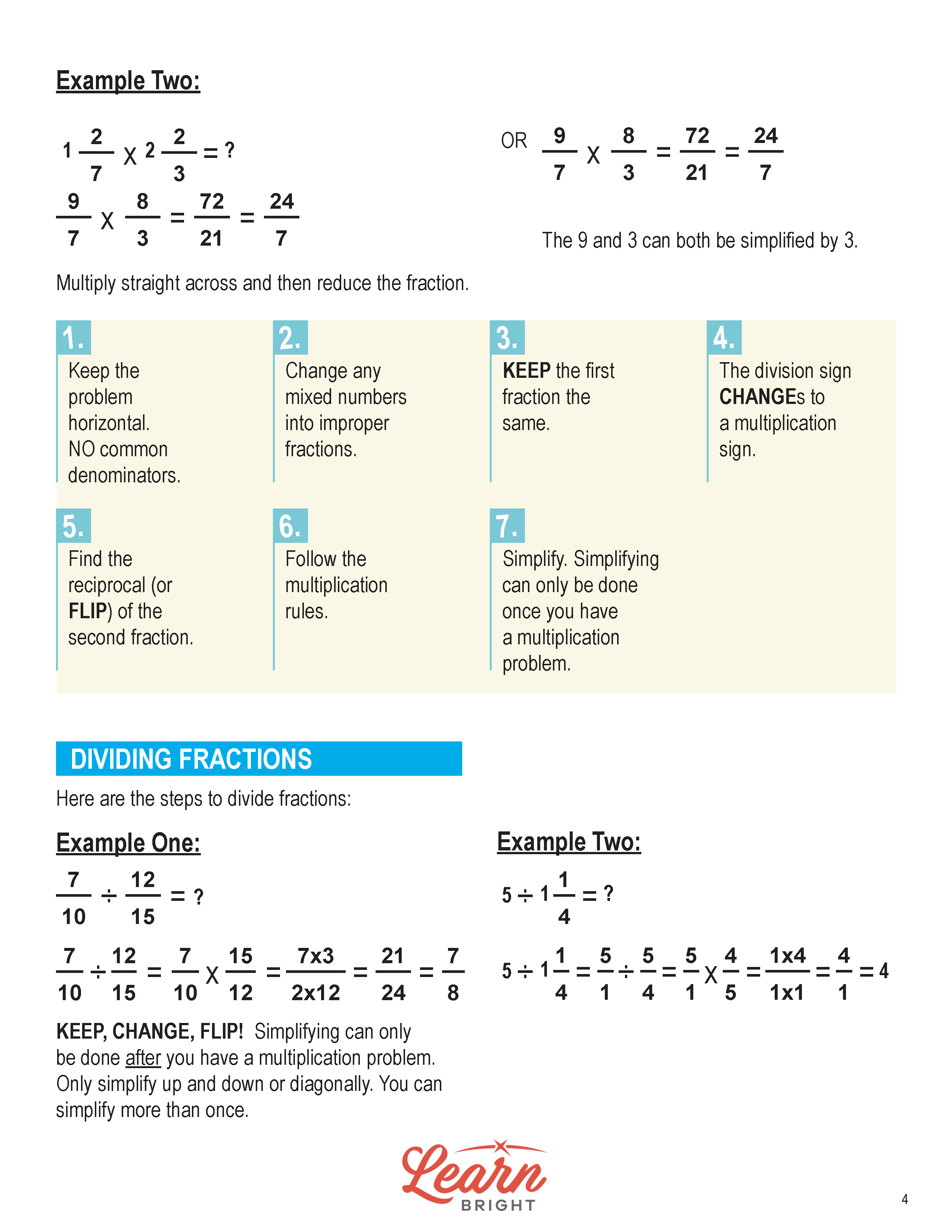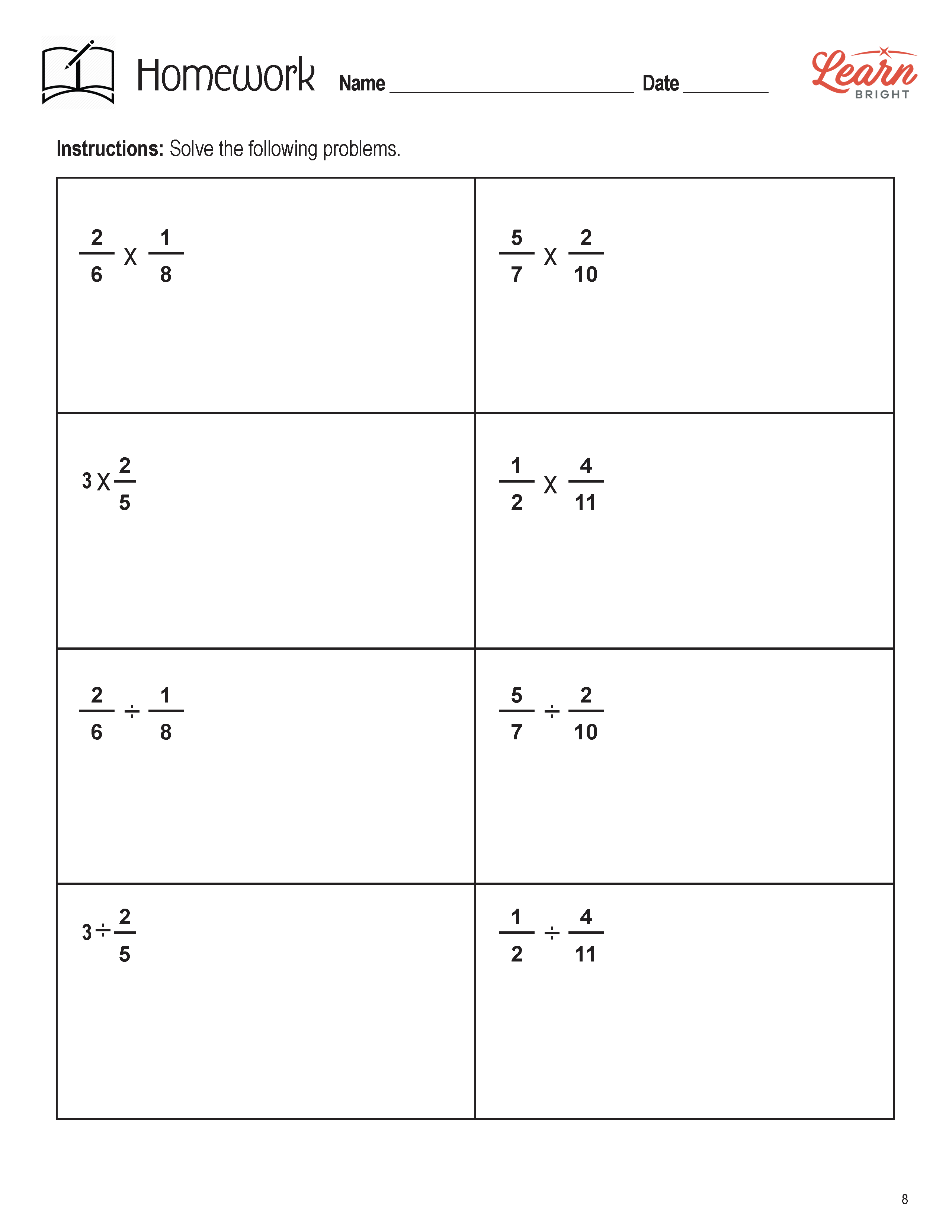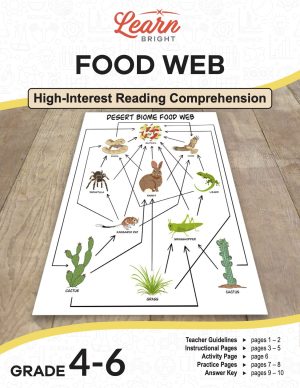Description
What our Fractions—Multiply and Divide lesson plan includes
Lesson Objectives and Overview: Fractions—Multiply and Divide teaches students how to multiply and divide fractions by understanding how the vocabulary connects with the steps in each problem. Examples are provided for the teacher to do along with the students, including a fun group project that lets students be colorful and creative. By the end of the lesson, your students will be able to confidently multiply and divide fractions. This lesson is for students in 5th grade.
Classroom Procedure
Every lesson plan provides you with a classroom procedure page that outlines a step-by-step guide to follow. You do not have to follow the guide exactly. The guide helps you organize the lesson and details when to hand out worksheets. It also lists information in the blue box that you might find useful. You will find the lesson objectives, state standards, and number of class sessions the lesson should take to complete in this area. In addition, it describes the supplies you will need as well as what and how you need to prepare beforehand.
Options for Lesson
Included with this lesson is an “Options for Lesson” section that lists a number of suggestions for activities to add to the lesson or substitutions for the ones already in the lesson. All of the suggestions for this lesson relate to adding an additional activity to the lesson, in which each student gets an index card with a fraction written on the card. In the first round, students find a partner and multiply. In the second round, students find a different partner and divide. For the third round, students find a partner and switch fractions. Repeat as many rounds as necessary. Have students work as partners to solve the problems together. Tell students they are only able to go to a student one time during the whole activity.
Teacher Notes
The teacher notes page includes a paragraph with additional guidelines and things to think about as you begin to plan your lesson. This page also includes lines that you can use to add your own notes as you’re preparing for this lesson.
FRACTIONS—MULTIPLY AND DIVIDE LESSON PLAN CONTENT PAGES
Fractions—Multiply & Divide
The Fractions—Multiply and Divide lesson plan includes two content pages. The lesson begins with a review of some important vocabulary terms. Fractions tell us how many parts of a whole we have. Mixed numbers include a whole number and a fraction. Improper fractions are fractions that have a numerator greater than the denominator. The numerator is the number on the top of the fraction, and the denominator is the number on the bottom of the fraction. The multiplicative inverse is the property where you multiply by a number to get 1. Finally, a reciprocal fraction is a fraction that has been “flipped,” and the numerator and denominator exchange places.
Multiplying Fractions
There are five steps to multiply fractions. First, keep the problem horizontal and don’t worry about common denominators. Second, change any mixed numbers into improper fractions. Third, simplify the problem vertically (by reducing) or horizontally (by cross cancelling). Fourth, multiply the numerators straight across. Fifth, multiply the denominators straight across.
The lesson includes two example problems. The first example problem is 3/5 x 5/6. To solve, we follow the steps above. The lesson shows how to solve this problem in two different ways. You can multiply the fractions straight across and reduce: 3/5 x 5/6 = 15/30 = 1/2. You can also simplify: 3 x 5 / 5 x 6 = 1 x 1 / 1 x 2 = 1/2.
In the second example, you first need to change the mixed numbers into fractions before solving using the steps above.
Dividing Fractions
There are seven steps to divide fractions. First, keep the problem horizontal and don’t worry about common denominators. Second, change any mixed numbers into improper fractions. Third, keep the first fraction the same. Fourth, change the division sign to a multiplication sign. Fifth, find the reciprocal (or flip) of the second fraction. Sixth, follow the multiplication rules. Seventh, simplify!
The lesson includes two example problems. The first example problem is 7/10 ÷ 12/15. To solve, we follow the steps above. Remember to keep, change, flip, and reduce: 7/10 ÷ 12/15 (keep) = 7/10 x 15/12 (flip) = 7 x 3 / 2 x 12 (multiply) = 21/24 = 7/8 (reduce).
In the second example, you first need to change the mixed number into a fraction before solving using the steps above.
FRACTIONS—MULTIPLY AND DIVIDE LESSON PLAN WORKSHEETS
The Fractions—Multiply and Divide lesson plan includes three worksheets: an activity worksheet, a practice worksheet, and a homework assignment. You can refer to the guide on the classroom procedure page to determine when to hand out each worksheet.
GRAFFITI WALL ACTIVITY WORKSHEET
Students will work in groups to complete the activity worksheet. Each group will create their own Graffiti Wall using a large sheet of bulletin board paper and markers. On their “graffiti wall,” they must include definitions or diagrams of fractions, mixed numbers, improper fractions, numerators, denominators, multiplicative inverses, and reciprocals. They must also include directions and examples for solving adding and subtracting fractions, adding and subtracting mixed numbers, subtracting fractions with renaming, multiplying fractions and mixed numbers, and dividing fractions and mixed numbers.
SOLVING PROBLEMS PRACTICE WORKSHEET
For the practice worksheet, students will solve four fraction multiplication problems and four fraction division problems.
FRACTIONS—MULTIPLY AND DIVIDE HOMEWORK ASSIGNMENT
Like the practice worksheet, for the homework assignment, students will solve four fraction multiplication problems and four fraction division problems.
Worksheet Answer Keys
This lesson plan includes answer keys for the practice worksheet and the homework assignment. If you choose to administer the lesson pages to your students via PDF, you will need to save a new file that omits these pages. Otherwise, you can simply print out the applicable pages and keep these as reference for yourself when grading assignments.









